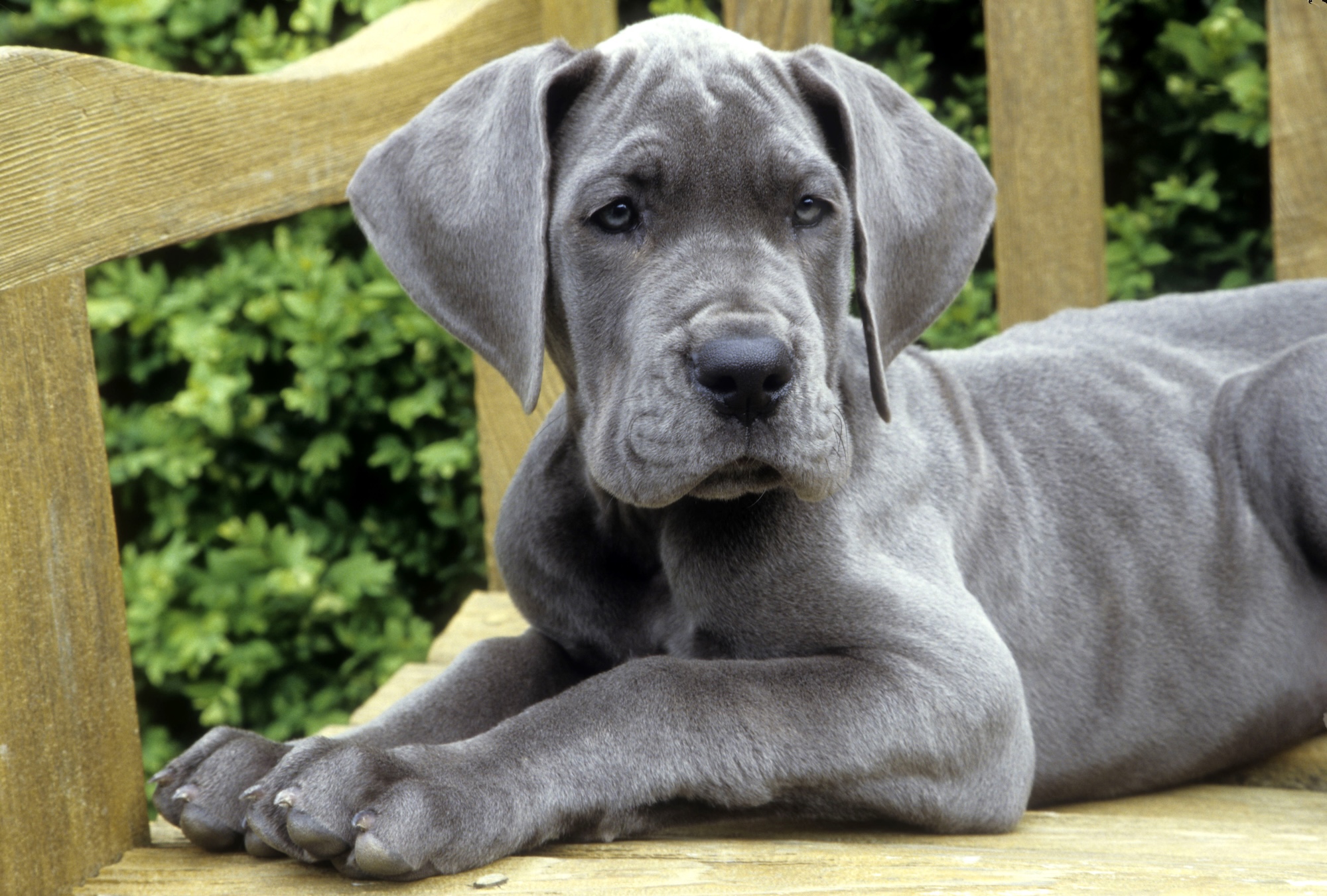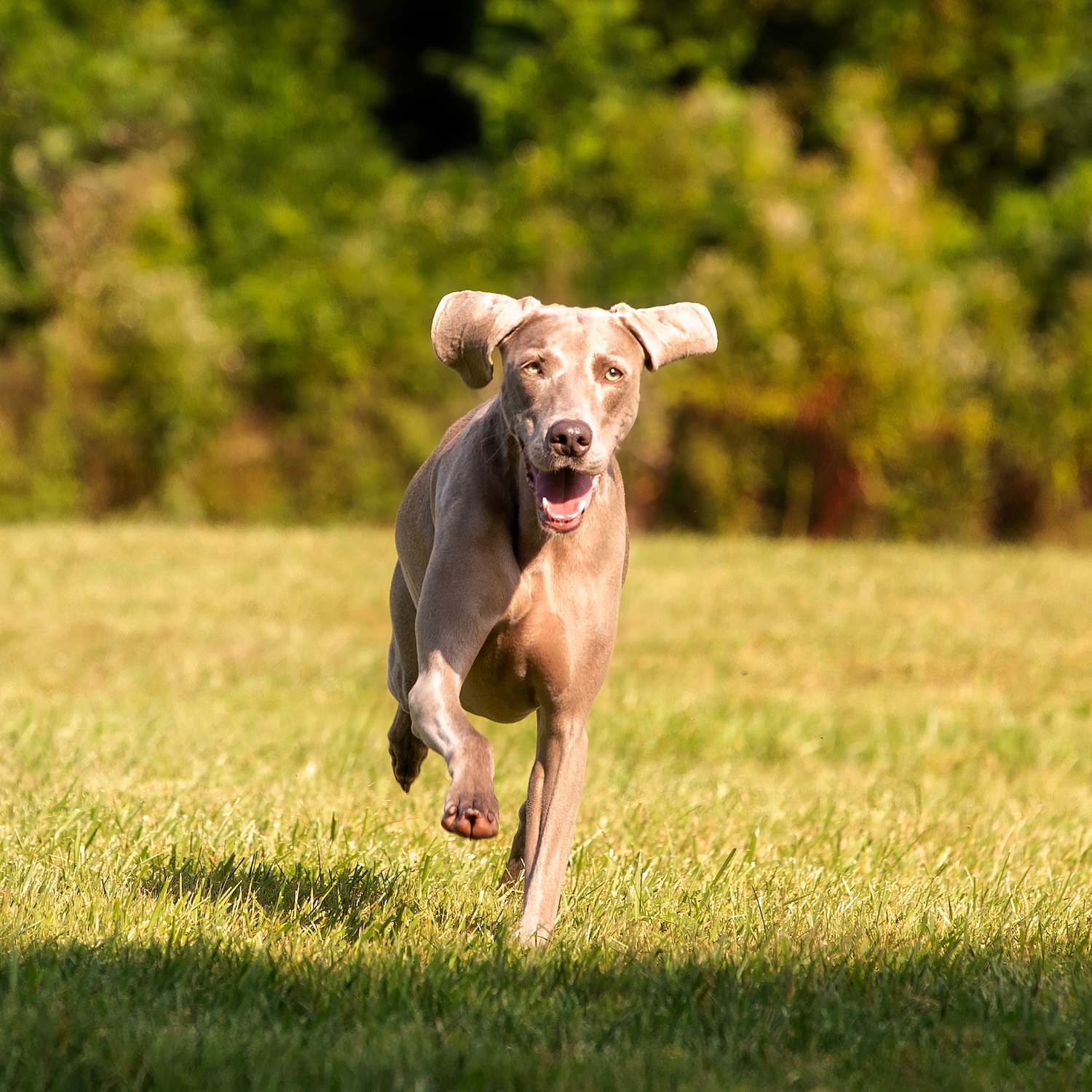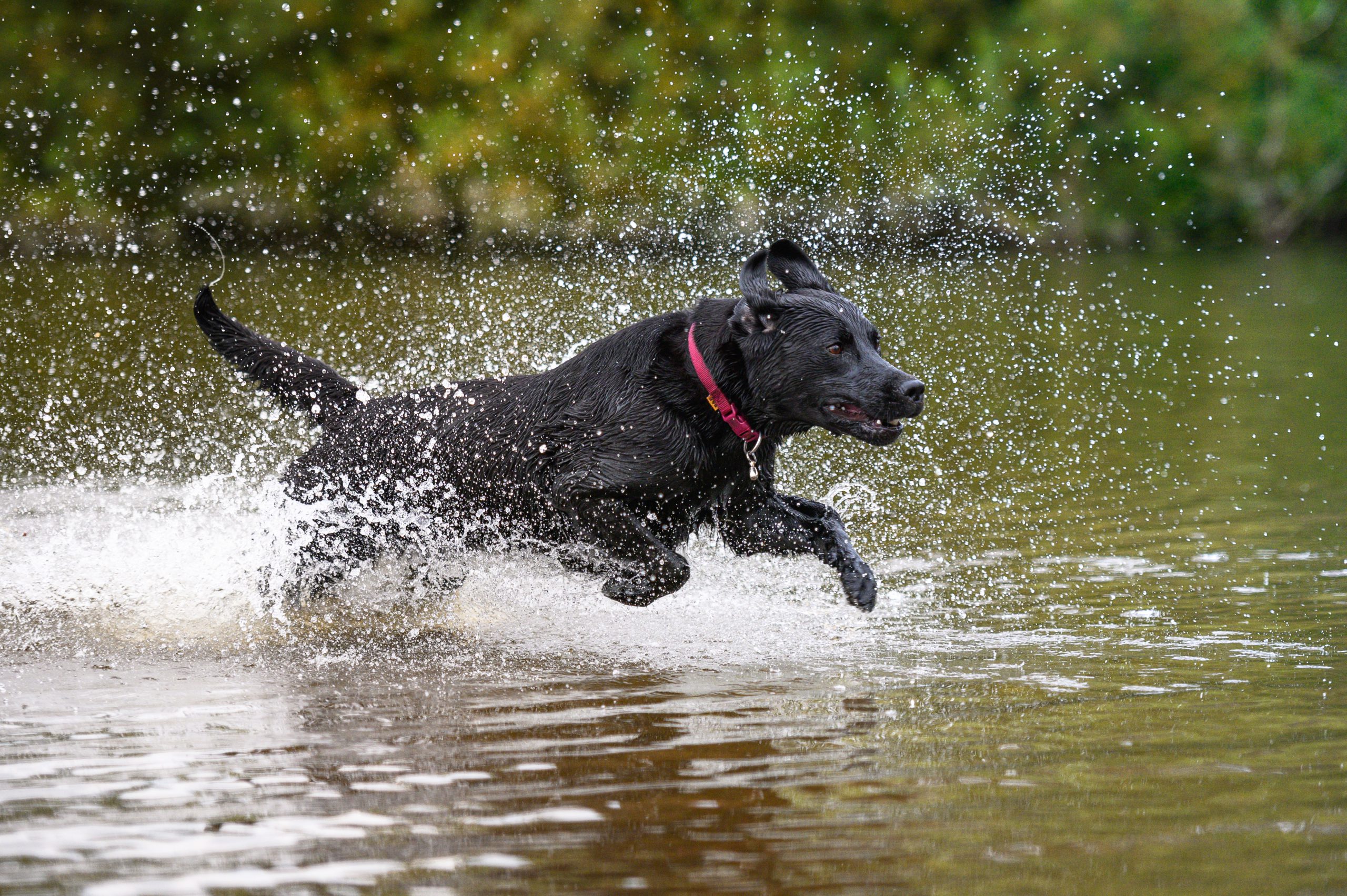Like all people, all dogs are different, especially when it comes to energy levels. Some are content to nap much of the day away (looking at you, pugs). Others require a fair amount of exercise to be happy, like Labs. And then there’s the Australian shepherd.
Just when you think you’ve burned an Aussie’s energy stores, they have more gas in the tank. No matter how many long hikes, runs, trips to the dog park, and puzzles you pull out, an Australian shepherd will always be ready for more.
Active, family-oriented, and scary smart, these perpetual motion machines are loyal companions with energy to spare, making them great for families and singles alike. But, bred as herders and guardians, Aussies are a working breed who require a job to do in order to thrive. Here’s everything you need to know about these beautiful, high-intensity dogs to help them live their best lives.
Basic facts on Australian shepherds
According to the Australian Shepherd Club of America, the Aussie’s background as a working dog is evident in their physique. Australian shepherds are medium-sized, deep-chested, and slightly longer than they are tall, with relatively straight front legs, a combination which helps them maintain both agility and endurance. Depending on sex, they range in size from 18 to 23 inches tall and 40 to 65 pounds. Their coats are medium length, somewhat coarse, and weather resistant, which helps them work in any weather condition, and they come in blue merle, red merle, black, and red varieties, all of which commonly have tan and white spotting.
Aussies also have bright, alert eyes, which give away their high level of intelligence (the intense gaze is used by working dogs to communicate with their hoofed herds and flocks). While they most often have brown eyes, it’s not uncommon for Aussies, especially merle varieties, to have blue or even heterochromatic (one blue and one brown) eyes. And one surprising feature: 20% of Aussies have naturally bobbed tails.
“He is most happy when he is chasing his ball with his dad. He will nip at our heels when he is excited. He is very protective and has lots of energy. His quirks include pulling both dog blankets out of his crate every morning and carrying our shoes around the house. Can’t imagine life without him!!” —Cheryl Naile, mom to Aussie Dundee
Among their other trademark features: the alert, triangle-shaped ears. With a signature flop forward, they turn this way and that as Aussies take in all the sounds around them, making them one of the most expressive parts of the animated dog’s anatomy.
Of course, there is also the mini Australian shepherd, a diminutive version of the breed which is also AKC-recognized. The males max out at 18 inches tall and 40 pounds and have similar body conditions and energy levels to the standard version. Some breeders also advertise for toy and teacup versions: however, those are merely undersized versions of the mini.
The work-hard, play-hard personality of the Australian shepherd
The Australian shepherd is a bit like your friend who manages to run marathons, score promotions at work, remember important dates, and make time for friends and family. They want to be involved in everything at all times and somehow have the energy to do it all.
While they were bred for work, Aussies are social as all get-out, preferring the company of their loved ones, whether people of all ages (including children), other dogs, or even smaller animals such as cats if properly socialized early on. Countless Aussie owners tell tales of how their dogs “herd” all manner of people and animals, though there isn’t a farm in sight.
“Buttons is very intelligent,” says Jennifer Serrano of her Aussie mix. “She is a quick learner and takes to training very well. She is extremely loyal to me. If my husband is walking her and I fall too far behind, Buttons will stop in her tracks and look for me. She won’t continue walking until I catch up. In the last year, she has developed a sweet protective habit of laying on the bath mat outside the shower door while I shower.”
Aussies also frequently suffer from separation anxiety if they’re away from their people for long stretches of time, so keep that in mind when considering whether they’ll fit your lifestyle. At the same time, they can be reserved with strangers: they have to get to know people before their sparkling personalities come out to play.
Because of their high level of intelligence, it’s crucial for both an Aussie’s well-being and your own sanity that you start training them early and often, constantly reinforcing their boundaries, refreshing their skills, and teaching them new tricks. Aussies are smart enough to railroad new owners who don’t quite understand their needs, so firmness and consistency are key.
And when it comes to exercise, a long walk or two is not going to cut it. Even if you were to run your Aussie for a few hours a day, it wouldn’t be enough to meet their needs, and an under-stimulated Aussie is a destructive Aussie. These dogs also need mental stimulation, which means breaking out puzzle toys or even getting involved in agility training or another sport
A brief (and surprising!) history of the Australian shepherd
You’d be forgiven for thinking Australian shepherds originated in Australia. But these ranch dogs are actually American—by way of Spain. Aussies originated in California in the 19th century, bred initially for ranch work in the harsh and varied climes of the western state. And while there is some debate about the veracity of this claim, many experts believe that Australian shepherds originated from the dogs that Basque people —coming from a mountainous region between Spain and France—brought with them to the U.S. to work as shepherds.
So where does the Australian label come from? According to some, many of these Basque shepherds came to California by way of Australia. Still others claim the name comes from the fact that many sheep at the time the breed first emerged were brought over from Australia. As for the mini Aussie, this scaled-down version was first bred in California in the 1960s as a livestock herder.
Caring for an Australian shepherd
It cannot be overstated how much stimulation Aussies need in order to be happy. These dogs were bred to work long days in harsh conditions, doing a job that was both physically demanding and required significant mental strategy.
“If you don’t want to be a couch potato and truly have a best friend, who is smart, loyal, kind, and active, then I highly recommend Australian shepherds. Without question, Blu has changed my life for the better.” —Aussie owner Dawn
If you don’t teach them how to direct their mental and physical energy, they’ll rely on instinct, which can often lead to annoying and even downright destructive tendencies. Many people who adopt Aussies underestimate their needs, so it’s important to know, before adopting one, that they are smart, sweet, and demanding.
This is why it’s so important to give this breed a job to do, even if they’re going to be a family pet.
Giving an Aussie the stimulation they need
Of course, Aussies need plenty of physical exercise: no less than one hour per day, and preferably upwards of two hours. This goes for both standard and mini Aussies.
Beyond the physical however, Aussies need to work out their brains. Even if you were to run them for hours, they still might display destructive or maladaptive behavior (digging, chewing, barking, etc.). In fact, all dogs need mental stimulation: it tires them out as much or more than physical stimulation, and as we know, a tired dog is a happy dog.
Whether playing fetch or hide and seek, signing them up for agility training, building an obstacle course in your backyard, or consistently practicing obedience skills, you’ll see the animated spirit of the Aussie really come to life when they get to use their sharp minds and herding instincts.
Aussie owner Amanda Bard says her dog Lucy needs to “find something to keep her brain occupied or she gets depressed. Even if it’s something as simple as taking the time to do basic commands/tricks/training with her, she will be so much happier doing something when she’s stuck at home.”
Some ways you can exhaust your Aussie mentally:
- Puzzle toys such as Kongs, licking mats, and treat-dispensing balls
- Dog sports, such as agility, scent work, and dock diving
- Backyard obstacle courses
- Hiking and backpacking, which combines physical activity with mental stimulation
Common health concerns for Australian shepherds
While Aussies are generally healthy, there are a few health-related issues Aussie owners should be aware of when it comes to caring for these dynamos.
Allergies: One of the most common health concerns facing Australian shepherds is allergies, especially skin allergies. The most common symptoms of allergies include excessive scratching and/or paw licking, hot spots, paw and ear infections, and hair loss. These allergies can be caused by environmental factors (such as pollen or fleas) and food, so if your Aussie experiences any of these symptoms, consult your vet to determine next steps for treatment.
Anxiety: As with many intelligent breeds, Aussies tend to suffer from higher rates of anxiety if they don’t have an outlet for their mental and physical energy. Aussies do not like being separated from their family members, so it’s important to teach an Aussie how to be on their own from an early age to prevent them from becoming destructive, possibly hurting themselves in the process. Read more about separation anxiety here.
Deafness: One quirk of the breed: they have a higher-than-average incidence of deafness, most often due to a lack of pigment in the inner ear.
Drug sensitivity: Certain herding breeds, including Aussies, may be sensitive to some parasite-control, anti-cancer, antibiotic, and pain medications and can suffer life-threatening illness if given those medications. This is due to a gene mutation called MDR1 that makes it difficult for the body to metabolize these drugs, allowing them to build up in the body and brain. Speak to your vet about how your dog might react to any medication being prescribed. There is a DNA test that can identify which dogs may be at risk.
Hip and elbow dysplasia: While a hallmark of the Australian shepherd is their well-balanced body condition, they can, like many working dogs, suffer from hip and elbow dysplasia, which can lead to degenerative joint disease (DJD). While hip dysplasia is a genetic joint deformity that occurs while a dog is still growing, it can be exacerbated by extra weight, so it’s important to keep your Aussie at an ideal weight. Symptoms include weakness and pain in the hind legs and difficulty getting up from a sitting or lying down position.
Hypothyroidism: As with humans, hypothyroidism is a malfunction of the thyroid gland, which leads to a significant slow-down of the metabolic system. Signs include skin and coat issues, and behavioral changes, like lethargy, inactivity, and mental dullness, all highly unusual traits in a typical Australian shepherd. If your Aussie is exhibiting any of these signs, consult your vet immediately; while not curable, hypothyroidism is treatable with medication.
Feeding your Australian shepherd
While Australian shepherds are a relatively healthy breed, they are prone to obesity and commonly suffer from allergies, both issues which can either be improved or exacerbated by diet.
Obesity is not merely an aesthetic issue: it can exacerbate joint problems, to which Aussies are prone. Maintaining a healthy body condition can prevent joint problems such as arthritis and hip and elbow dysplasia from seriously impacting your Aussie’s quality of life. Obesity can also increase the likelihood of diseases like cancer.
That means it’s of the utmost importance to ensure your Aussie gets healthy food in the right amount they need to maintain a healthy weight.
For Aussies with dry and itchy skin, sensitive stomachs, or other signs of food allergies and sensitivities, it’s important to know exactly what you’re feeding, something that can be impossible with kibble, which often contains ingredients not listed on the bag. Allergic reactions and intolerances to food are fairly common in dogs and many people notice symptoms clear up when they switch from highly processed to fresh, whole food.
“Mia is a soon-to-be 14-year-old toy Australia Shepherd. Once we started feeding her The Farmer’s Dog, she has done a 180. Fit, loves to walk again and has energy like a puppy. In fact, when we are walking, people mistake her for a puppy. Thank you Farmer Dog for giving my Mia her youthful exuberance back!” – Mia’s mom, Lisabeth
If you’re looking for pre-portioned, healthy meals, tailored to your Australian shepherd’s age, size, activity level, and weight, consider signing up for a fresh food plan. A plan tailored to your smart shepherd will take the guesswork out of portion management, and ensure you’re providing all the necessary nutrients, in the right balance. A healthy diet is the best way to support your Aussie’s health and happiness — along with training, regular vet care, love, and some loving friends to herd, of course.
If an Australian shepherd sounds like the right fit for your lifestyle, consider searching adoption organizations near you, or online.





